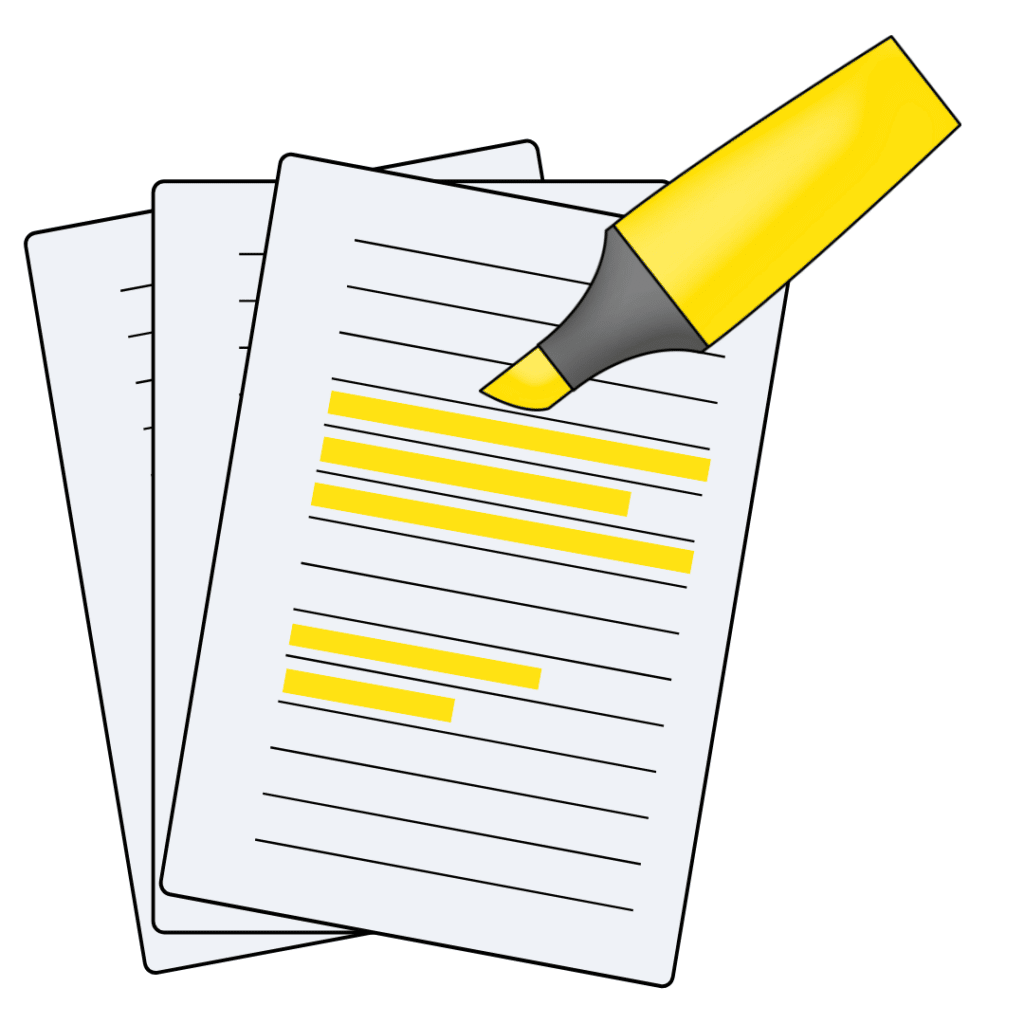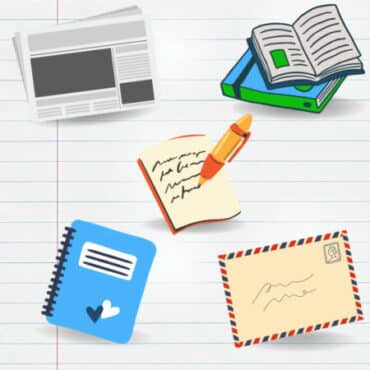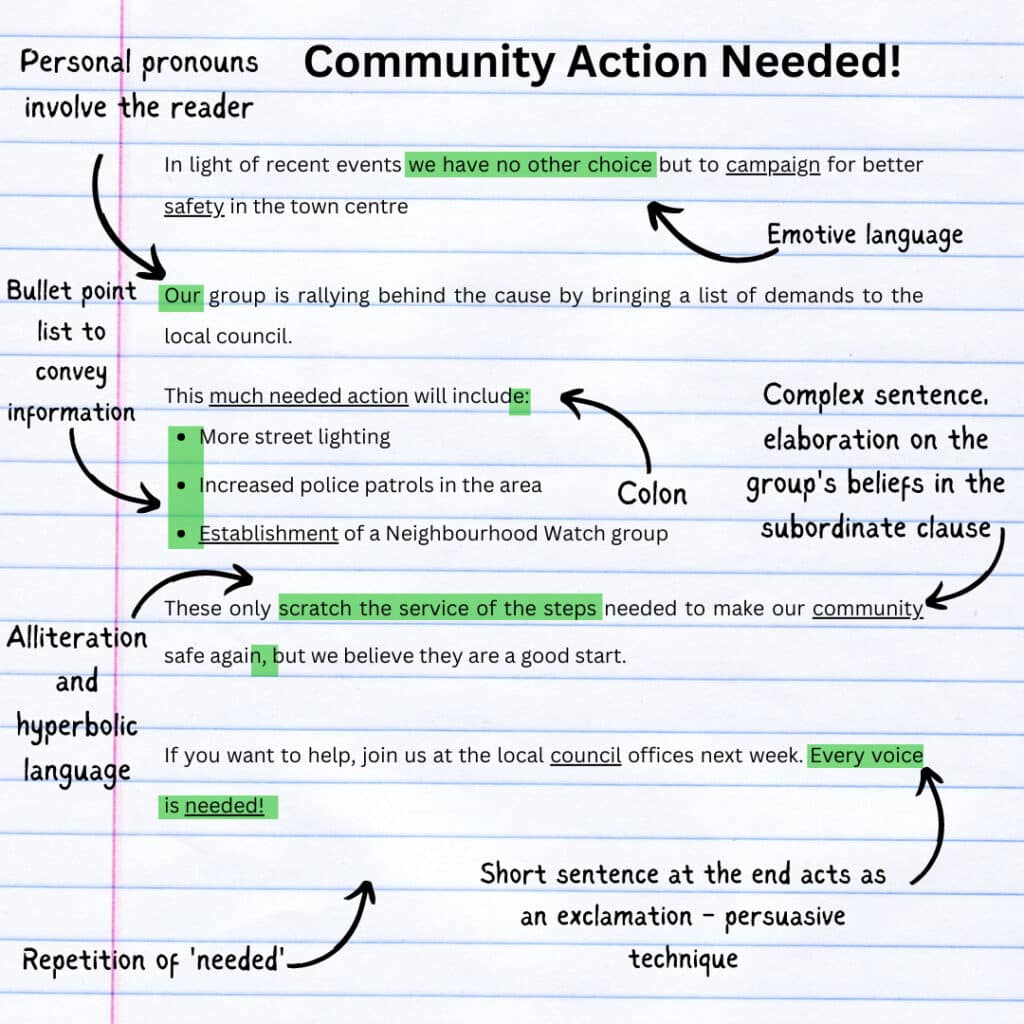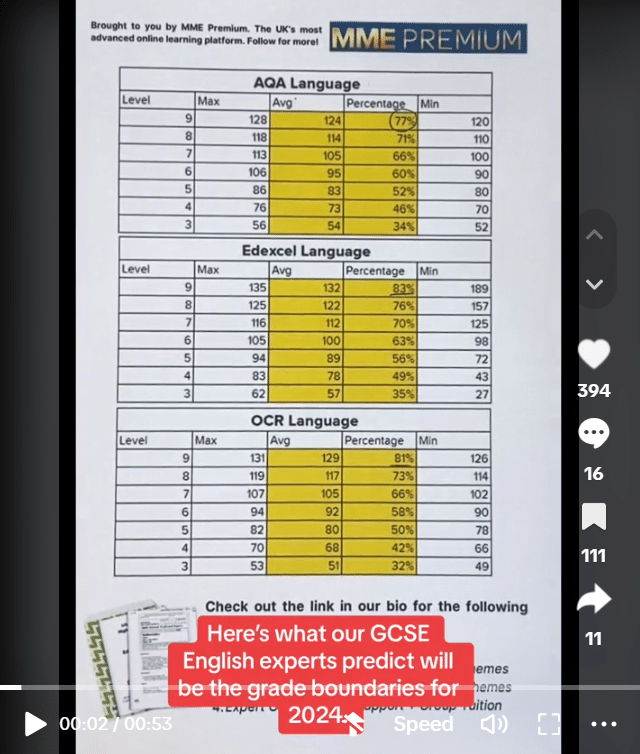Annotation Essentials
Annotation Essentials Revision
Annotation Essentials
Here we cover why annotation is important, what can be annotated, and how to do it.
These are important skills to develop in the lead up to your exam, and for future study after GCSEs and beyond!
What is Annotation?
Annotations are any notes you make on a text that make it easier to break down, usually to help yourself understand it more, and gather different interpretations of the text.

Some things to think about when you are annotating are…
What stands out to you in the text?
Did it create a certain emotion or thought in your mind?
Can you spot complex punctuation or a variation in sentence structure?
Is there a change in tone or focus throughout the text?
Are the techniques used with an aim in mind? Do they achieve it?
What specific language or structural techniques can you spot?
Why is Annotation Important?
In a pressured exam situation, it can be easy to lose track of things or forget key points you thought of when you read the question.
Making notes on the text as you read is helpful when planning your answer as your own unique opinions are already noted down. You are doing all the hard work of reading as you go along!

It is also much easier to create a coherent line of argument as you can focus on how to craft and structure your answer if all the points you want to make have already been noted down.
Annotation can also help you to spot patterns and developments of language and structure in the text.
Things like shifts in perspective, focus or tone show sophisticated analysis to the examiner and are often easier to spot if you have been annotating as you go.
What Can Be Annotated in a Text?
- Ideas – is there a recurring theme throughout the text?
- Key words – that might give you a clue as to the author’s opinions or aims
- Links – between different sections of texts, or topics within the text.
Full sentences or even individual words and phrases can be annotated.
- Punctuation or language with significant meaning as well as structural techniques that stand out to you.
Maybe the author has used rhetorical questions throughout, or short sentences at the beginning of the piece.
- Do they contribute to an overall tone or mood?
- What effect do they have on the reader?
- How have they been used to achieve the author’s aim?
If the text is an article you could annotate the headline or subheading as a way to jump into the subject, or aim of the author.
Annotations can be used in both reading and writing sections, to generate and remember ideas in a range of answers.
Annotating Questions

Annotations can be added to questions to help you to remember specific words or phrases.
Annotating the question is a good idea to focus your planning and make sure you know exactly what is being asked of you.
- In a writing question, circle the key words and try making a mind map of what techniques come to mind…
For example:
If you are asked to discuss ‘language’, your annotations might focus on picking out different features, ‘structure’ could be the use varied sentences or the way the text develops.
Which Texts Should You Annotate?
Any texts, fiction and non-fiction can be annotated.
Annotate the question, the texts given in the exam, and even your own answers while you are practising!
In questions where only a few lines are given, more detailed annotations are useful to focus on what you need to achieve in the answer to get top marks.
Annotating sources for the reading section can be useful to refer back to in other questions, so picking out all the key points will save time in the exam.
Once you’ve completed a mock exam or practice question, have a go at annotating your own work to see what you have, or could have, included. This can help you focus on what to improve on as well as getting better at spotting techniques in different pieces of work!

Examples of texts that can be annotated…
- Magazine Article
- Newspaper Article
- Novel Extract
- Journal
- Essay
- Memoir
- Autobiography
- Travel writing
- Letter
How Do We Annotate Texts?
Start with an initial read through of the text to get an idea of the main ideas or themes.
Underline words or phrases that stick out to you.
Once you have a general idea of what is going on, you can begin to annotate in more detail.
Here is when specific techniques could be picked out, sentence structure or length analysed and the effects of language explored.
Different methods can be used to annotate your text, it is important you pick the right one for you.
Here Are Some Ideas in the Meantime…
- Colour coding with highlighting for different techniques.
- Underlining keywords or use of sophisticated vocabulary.
- Circles or arrows linking examples of language techniques in the text, or outlining ideas that are sparked by certain things the author has done.

It’s a good idea to have a consistent style for your annotations to speed up the process and avoid misunderstanding in the exam.
Here is an example of what your annotations could look like.
As you can see, key words or phrases are underlined and structural and language techniques highlighted.

MME Premium Membership
£19.99
/monthLearn an entire GCSE course for maths, English and science on the most comprehensive online learning platform. With revision explainer videos & notes, practice questions, topic tests and full mock exams for each topic on every course, it’s easy to Learn and Revise with the MME Learning Portal.
Sign Up Now


